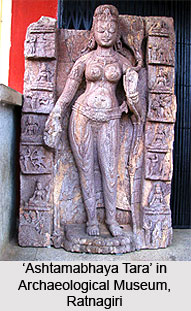 History of Jajpur District, Odisha dates back to the 10th century, when this region was under the rule of `Jajati Keshari`, a king of the Somvanshi Dynasty. The name `Jajpur` is believed to be attributed to the name of this royal king. The district is also referred to as the `Biraja Khetra`, which when translated to English implies `the region divine to Goddess Biraja`. It is existent on the banks of Baitarani River. Jajpur District is a historically significant spot and excavations conducted here suggest that Jajpur was the royal capital of Odisha during the reign of the Kesari Dynasty. Historians have claimed that Jajpur is one of the names of Lord Jagannath which used to be present as part of Kalinga.
History of Jajpur District, Odisha dates back to the 10th century, when this region was under the rule of `Jajati Keshari`, a king of the Somvanshi Dynasty. The name `Jajpur` is believed to be attributed to the name of this royal king. The district is also referred to as the `Biraja Khetra`, which when translated to English implies `the region divine to Goddess Biraja`. It is existent on the banks of Baitarani River. Jajpur District is a historically significant spot and excavations conducted here suggest that Jajpur was the royal capital of Odisha during the reign of the Kesari Dynasty. Historians have claimed that Jajpur is one of the names of Lord Jagannath which used to be present as part of Kalinga.
It is said that King Jajati of Somvanshi had once performed a major `Yajna` known as `Dasaswamedha` at this region. Thereafter, he had brought 10, 000 Brahmins from the northern portion of India, who had settled in the different `Sasanas` in Jajpur. He had made Jajpur as his own capital which was later renamed as `Jajatipura` by his orders. Jajpur is mentioned in various mythological tales of India and also many `Puranas` including `Baitarani Tirtha` and `Viraja`. `Astapithamahatmaya`, `Tantrachintamani`, `Brahmanda Purana`, `Brahma Purana`, `Vayu Purana`, `Chaitanya -Charitamrita` and so on. Jajpur District is quite popular amongst Hindus for being one of the `Shakti Peethas`.
Historical accounts have asserted that Jajpur was an important pilgrimage centre as it possessed numerable stone temples, similar to those existent in Bhubaneshwar. These temples were quite ancient and comprised magnificent architectural features. However, during 736 A.D., Jajpur District became the seat for a brand new political scenario, gradually, with the advent of the Bhaumakaras. For over 400 years, kings of Somvanshi Dynasty and Bhauma Dynasty ruled over vast stretches of Odisha and bore testimony to the traditions and culture of the people who lived during that point of time. Jajpur was declared as the capital during the rule of King Somvanshi. The area around the Archaeological Museum has given birth to several wonderful tourist destinations which are located near Ratnagiri. This museum is amongst the noted site museums belonging to the Archaeological Survey of India or ASI.
Besides being a cradle for Hinduism, Jajpur was also a crucial breeding centre of religions like Jainism and Buddhism. Ancient travelogues penned down by the traveller Hieun Tsang during 639 A.D. indicates the presence of `Puspagiri Vihar` in the regions located close to Jajpur District. Towards the 8th century, the philosophy of `Tantrayan` started developing in Jajpur. A Jagannath Temple had been constructed at Jajpur District, which had a resemblance to the Jagannath Temple at Puri. However, as per some accounts in history it was demolished by the Muslim invaders. Images of `Sapta Matrukas` can be noticed near the Dasaswamedh Ghat, which involve `Maheswari`, `Varahi`, `Chamunda`, `Indrani`, `Vaisnavi`, `Sivaduti` and others. Jajpur saw numerous political conflicts and gory warfare, especially the battle which led to the shifting of imperial power to the Afghans that was fought near Jajpur, particularly at Gohiri Tikira. Ramchandra Bhanja and Mukundadeva Harichandan fought against each other in this battle.



















